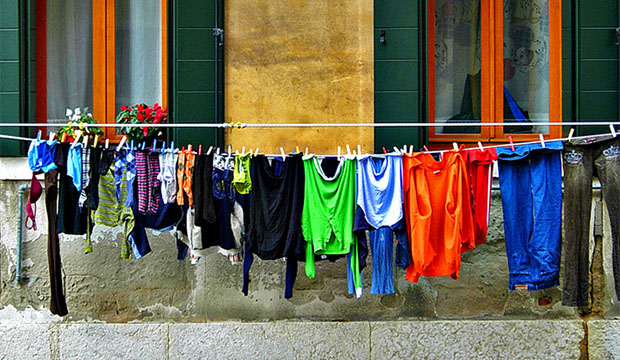

The process of dyeing fabric is usually not the most earth-friendly; it involves a lot of water waste and often the use of harsh chemicals. And while there are ways to lessen the damage done through dyeing with natural dyes, the process of coloring synthetics is usually pretty noxious.
Fortunately, Richard Blackburn, a coloration expert at the University of Leeds, has developed a textile technology that provides designers with an interesting, more ecologically sound alternative to dyeing synthetics.
This method, named DyeCat, completely cuts out one of the main issues that come with dyeing of any kind- water waste.
Fabric dyeing is currently the cause of up to 20 percent of industrial water pollution due to the high cost of purifying and reusing the water. However, textiles colored by DyeCat do not require the use of any water at all.
Considering the widespread use of synthetics in the fashion industry (polyester in particular), the impact has the potential to be great.
To cut out the need for dye water, the fabric’s production process is condensed. Rather than create a raw fiber to be dyed later, Blackburn asserts, “The trick lies in coloring the polyester as it is being made.”
Unlike wool or cotton which come as-is from natural resources, polyester is man-made, thus providing a greater range of control over its production. To create the plastic-based polyester, a chain of molecules is grown in a reaction called ‘polymerization.’ To solidify the chain and help the process go more quickly, chemicals called catalysts are added.
The team at DyeCat has developed a molecule that adds color, called a chromophore. This bonds to the chain, seamlessly adding color to the fiber on a molecular level.
The end result is of high quality; due to the method in which the color is applied, the dyes do not run or fade, as they are completely light and wash fast.
